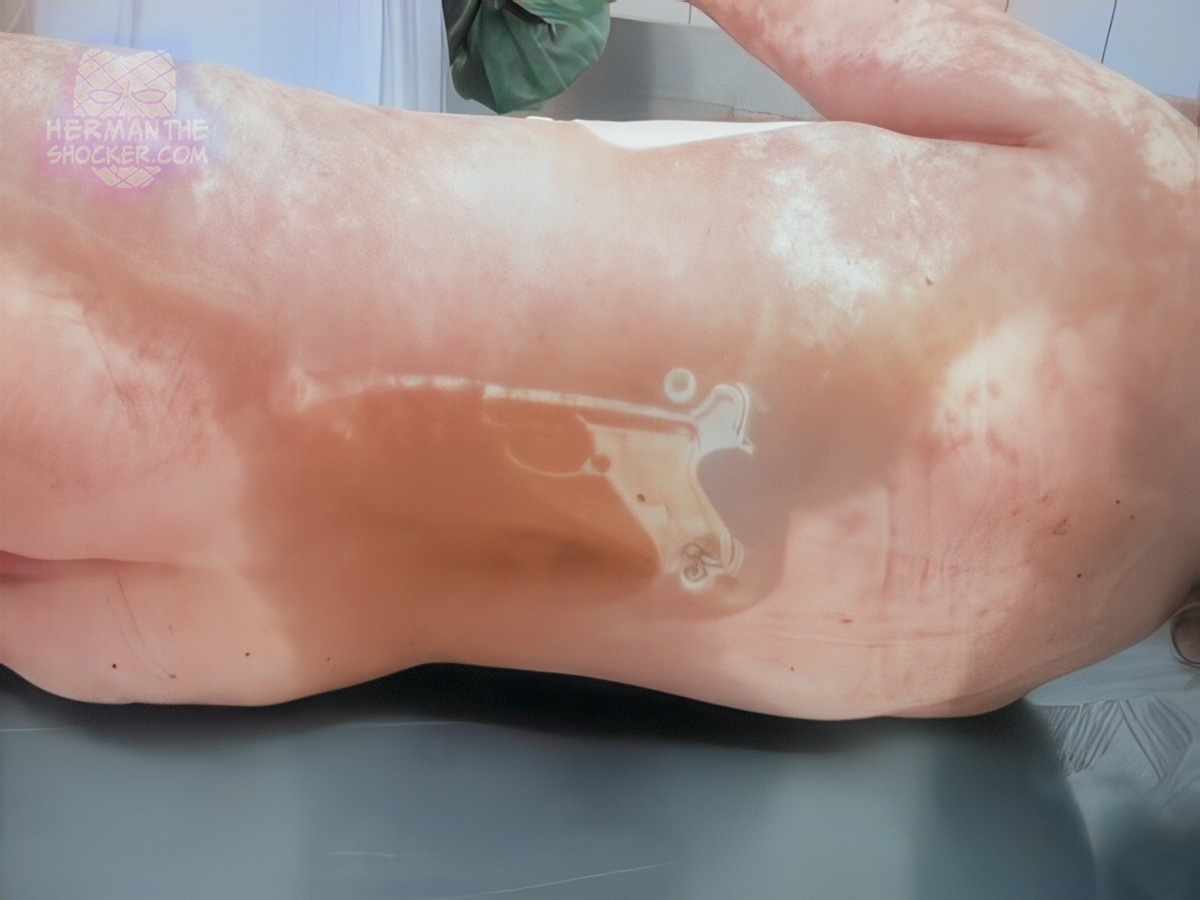This individual died lying on top of a gun. The patterned appearance of the gun is seen because of Livor mortis. Livor mortis (synonyms: livores, postmortem lividity, postmortem hypostasis) is visible as a usually bluish-violaceous to purple coloration appearing on lower (dependent) parts of the body within 30min to 3h after death.
Livor mortis is frequently patterned since the appearance of livores is hindered when the vessels in dependent parts of the body are obstructed due to outer-surface compression, for example, when prominent parts of the body such as areas over bony structures firmly adhere to a rigid surface due to the weight of the body or when tight clothing compresses the involved vessel lumina. In such areas, livor mortis is absent: the involved outer-body surface appears pale to white, in contrast with the surrounding livor mortis. This contact blanching may image the exterior of objects that were in contact with the dependent parts of the body surface during livor mortis formation and occasionally the distinctive morphological appearance of contact blanching may give the death investigator valuable hints about the case in question.
Creasing of the skin or tight clothing may produce contact blanching on the neck which may resemble ligature marks. Therefore, knowledge of the position of the head and neck, as well as the cloth worn at the time of death, is important for the death investigator.
In the early phase of their formation, livores have a reddish color, due to the prevailing number of erythrocytes carrying oxygenated hemoglobin. With an increase in the length of the postmortem interval, livores become darker, and when fully developed, the normal color of livor mortis is bluish-violaceous to purple. This is a result of oxygen dissociation from both the postmortem hemoglobin of erythrocytes and continuous oxygen consumption from cells that initially survive the cessation of cardiovascular function (e.g., skeletal muscle cells survive cessation of the cardiovascular system for 2–8 h). The resulting product is deoxyhemoglobin, which is bluish-violaceous to purple in color.
Latest posts








